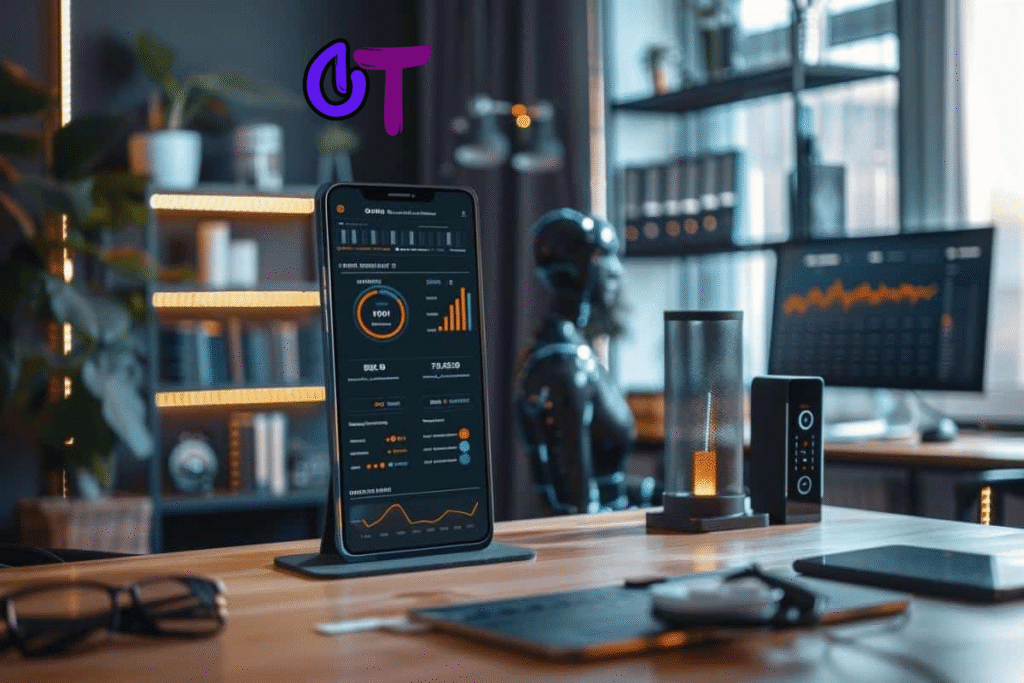In the evolving international mobile generation, Application Mobile DualMedia represents a groundbreaking shift—combining a couple of energetic media kinds which encompass video, audio, augmented reality (AR), and digital reality (VR) with actual-time interactive features like chatting, purchasing for, studying, and gaming. Unlike conventional mobile apps that concentrate on an unmarried media shape or static content material, DualMedia programs provide immersive, personalized, and dynamic tales that redefine how customers engage with their devices.
This whole article explores the idea of Application Mobile DualMedia, the technology powering it, key capabilities, improvement techniques, employer applications, challenges, and destiny tendencies. We might also even answer frequently requested inquiries to provide an entire understanding of this transformative cell app paradigm in 2025.
Table of Contents
- What is the Application Mobile DualMedia?
- Technologies Behind DualMedia Apps
- Core Features of DualMedia Applications
- Development Approaches: Native, Hybrid, Cross-Platform, and PWAs
- Design and User Experience (UX) Principles
- Industry Applications of DualMedia
- Benefits of DualMedia Apps for Users and Businesses
- Challenges in Developing DualMedia Applications
- Best Practices for Building DualMedia Apps
- Future Trends in Mobile DualMedia
What is the Application Mobile DualMedia?
Application Mobile DualMedia refers to mobile applications that integrate a couple of varieties of energetic media—which embody video, audio, AR, and VR—with real-time interactive abilities like live chat, social sharing, e-commerce, and educational devices. This integration transforms the character reveal from passive consumption to active participation.
For instance, a DualMedia app might also permit customers to take a look at a stay-stay of ordinary overall performance while interacting with considered one-of-a-kind fans in chat, buying products straight away, or experiencing AR-more visuals—all inside the equal app interface.
Technologies Behind DualMedia Apps
Several contemporary eras converge to allow DualMedia packages:
- 5G and Beyond: Ultra-speedy, low-latency networks allow easy streaming and actual-time interplay.
- Artificial Intelligence (AI) and Machine Learning: Personalize content material cloth, expect man or woman options, and allow herbal language processing.
- Augmented Reality (AR) and Virtual Reality (VR): Overlay digital content fabric at the physical global or create simply immersive environments.
- Edge Computing: Processes information toward the individual tool, lowering latency.
- Cloud Computing: Provides scalable garage and processing electricity.
- Advanced Sensors: Cameras, gyroscopes, GPS, and biometric sensors permit contextual and gesture-primarily based interplay.
Together, the era permits DualMedia apps to deliver wealthy, customized, and interactive memories.
Core Features of DualMedia Applications
- Multi-Modal Media Integration: Simultaneous streaming of video, audio, and interactive pix.
- Real-Time Interaction: Live chat, polls, quizzes, and social sharing embedded in inner media.
- Personalization: AI-driven content material fabric fabric hints and adaptive interfaces.
- Voice and Gesture Control: Hands-free navigation and commands.
- Augmented Reality Overlays: Contextual statistics or entertainment layered on virtual digital camera perspectives.
- Offline and Edge Functionality: Partial operation without non-prevent internet.
- Seamless E-Commerce: Integrated purchasing for research internal media streams.
- Cross-Platform Compatibility: Accessible on smartphones, tablets, and wearables.
- Development Approaches: Native, Hybrid, Cross-Platform, and PWAs
Building a DualMedia app calls for deciding on the proper improvement approach: - Native Apps: Developed particularly for iOS or Android, supplying top-notch overall performance and whole hardware get right of entry.
- Hybrid Apps: Use net technology wrapped in local boxes, allowing flow into platform deployment with a few universal performance change-offs.
- Cross-Platform Apps: Compiled into nearby code from a single codebase, balancing performance and development overall performance.
- Progressive Web Apps (PWAs): Browser-primarily based apps that paint offline and may be installed on devices but have restrained get right of entry to to tool competencies.
Developers often integrate these with AR/VR SDKs, AI libraries, and cloud services for sturdy DualMedia reviews.
Design and User Experience (UX) Principles
- User-Centered Design: Focus on patron wishes and contexts.
- Intuitive Navigation: Clear UI supporting multi-modal interaction.
- Responsive Layouts: Adapt to one in every-of-a-kind show sizes and orientations.
- Accessibility: Support for customers with disabilities.
- Minimal Latency: Smooth media playback and responsiveness.
- Engagement: Gamification and social abilities to reinforce retention.
Industry Applications of DualMedia
- Entertainment: Interactive live streaming, immersive live overall performance occasions.
- Education: AR-stronger lessons, interactive tutorials.
- Retail: Virtual strive-ons, live buying.
- Healthcare: AR diagnostics, affected person education.
- Real Estate: Virtual tours with interactive overlays.
- Travel: AR-guided tours.
- Gaming: Mixed truth video video games.
Benefits of DualMedia Apps for Users and Businesses
- Users: Immersive, custom-designed, interactive research; multi-tasking convenience.
- Businesses: Higher engagement, new profit streams, emblem differentiation, facts insights.
Challenges in Developing DualMedia Applications
- Technical complexity
- Performance optimization
- Content manage
- Privacy and protection
- User adoption
- Higher improvement costs
Best Practices for Building DualMedia Apps
- Define easy use times.
- Use modular shape.
- Invest in UX research.
- Utilize cloud and component computing.
- Ensure pass-platform guide.
- Prioritize protection.
- Plan for scalability.
Future Trends in Mobile DualMedia
- Deeper AI integration
- 5G and past
- Mixed truth
- Wearable integration
- Voice and emotional reputation
- Blockchain for content material rights
Conclusion
Application Mobile DualMedia is the subsequent frontier in cellular app development, blending a couple of media formats with interactive features to create wealthy, personalized reviews. Powered with the useful resource of advances in 5G, AI, AR/VR, and element computing, those apps are set to convert industries and patron expectancies in 2025 and the past. Embracing this era is vital for developers, companies, and clients aiming to thrive in the digital age.
(FAQs)
What is Application Mobile DualMedia?
A: Apps combining multiple media sorts with actual-time interactive capabilities for immersive research.
How is DualMedia precise from traditional apps?
A: Offers multi-sensory, interactive reports in choice of single media or static content fabric.
What technologies allow DualMedia?
A: 5G, AI, AR/VR, element and cloud computing, advanced sensors.
Which industries gain maximum?
A: Entertainment, schooling, retail, healthcare, actual belongings, adventure, gaming.
Are DualMedia apps difficult to increase?
A: Yes, they require advanced knowledge but provide excessive engagement.
Can DualMedia apps artwork offline?
A: Some skills can be through caching and aspect computing.
How do clients engage with DualMedia apps?
A: Touch, voice, gestures, AR/VR gadgets, eye tracking.
What privacy problems exist?
A: Protecting purchaser facts amid complex interactions is essential.
Are DualMedia apps move-platform?
A: Many are designed for iOS, Android, and net.
What is the destiny outlook?
A: Expected to turn out to be mainstream, the usage of recent virtual interplay office work.


